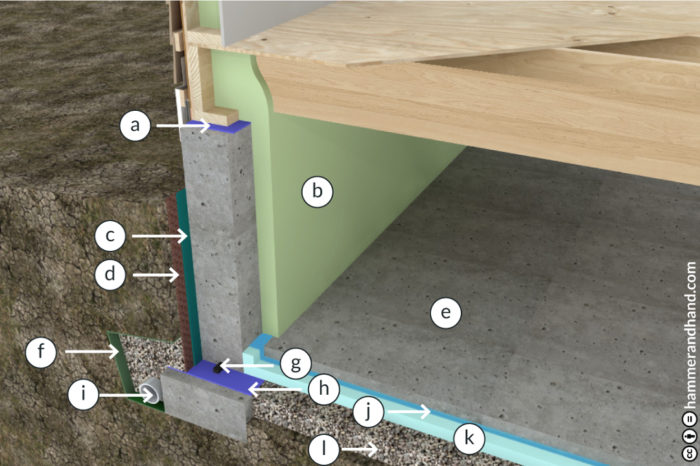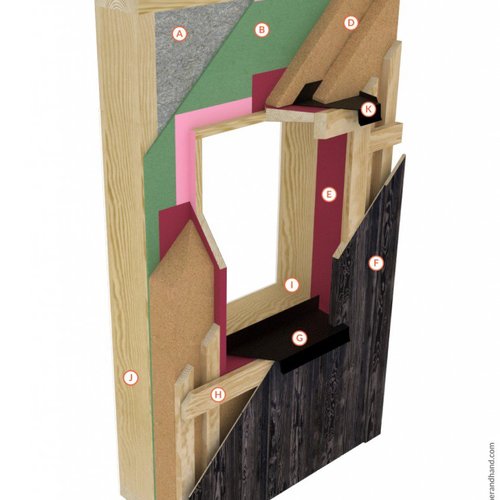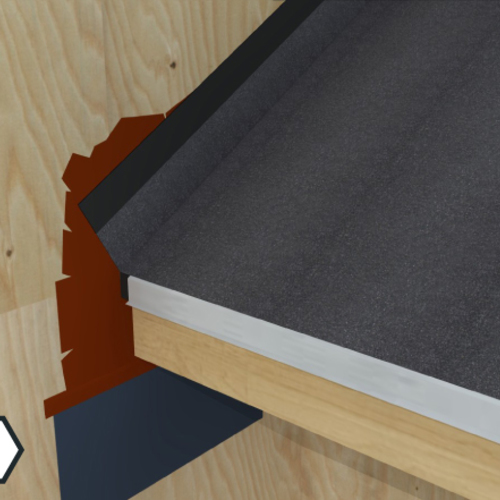Image Credit: Hammer & Hand
When I was building a home in 2001, I came up against a gazillion little things that I needed guidance on. I’d never built anything larger than a bookcase, so new home construction was quite a big step.
I bought books, scoured the web, and tried to get as much info out of Southface as I could, but I still couldn’t find everything I needed. As a result, I made mistakes because, as you know, the devil is in the details.
Builders now have a lot more information available online. Of course, there’s Green Building Advisor. (You’re soaking in it!) If you’re a GBA Pro you get access to a great library of details and more. And it doesn’t take a lot of work for a researching builder to end up at the web site of Building Science Corporation. Lstiburek and company provide a great service to us all by making so much information freely available. Ibacos, another Building America Partner, has likewise put a lot of great info on the web, mostly through the Building America Solution Center.
I just learned of a really nice addition to this online resource a couple of weeks ago. Hammer & Hand is a construction company in Portland and Seattle that focuses on high performance buildings, particularly Passive House. I’ve gotten to know several of them from the Passive House conferences I’ve attended over the past few years, and they’re a really impressive group. Zack Semke e-mailed me recently to tell me about their Best Practices Manual.
From conditioned crawl spaces to kick-out flashing…
The diagram above is from the manual, and it’s from the chapter on one of my favorite topics: crawl spaces. This is their diagram for detailing an encapsulated crawl space in new construction. They also show how to encapsulate a crawl space in an existing home and how to keep the building enclosure at the floor above the crawl space — along with recommending when that’s OK.
The manual doesn’t have everything you might look for — yet. They’re still working on it and will release more details as they are developed. The manual is also biased toward their climate. Their recommendation for ventilating an encapsulated crawl space is to put in an exhaust system and ideally to use an HRV. That might work in the Pacific Northwest, where the outdoor air is cool and dry, but it’s not ideal for humid climates. (Yes, I really did say the Northwest is cool and dry. It’s a psychrometrics thing.) If you want more on that topic, I’ve written up a more complete discussion of ways to deal with crawl space air.
The chapters in the manual are:
- Flashing
- Sealant Joints (from which Image #2 below is taken)
- Windows & Doors
- Rain Screens
- Wall Penetrations
- Roofs
- Basements
- Crawlspaces
- Decks
The spirit of cooperation
It’s really great stuff! And not only that, but they are sharing this freely with anyone and everyone through their website. They’ve put the Creative Commons license (that’s the CC on the images above) on all of it, so you’re free to use it pretty much how you choose as long as you follow their (light) restrictions:
Hammer & Hand’s Best Practices Manual is covered by a Creative Commons license that allows for redistribution, commercial and non-commercial, as long as content is passed along unchanged and in whole, with credit to Hammer & Hand. If any piece is shared online, it is required to credit Hammer & Hand and include a link to the relevant source page.
Sam Hagerman, a co-owner of Hammer & Hand, wrote: “We look forward to our role as participants in the economy of knowledge around all these concepts. Our efforts are offered in the spirit of cooperation, collaboration, and the greater good.”
Thank you, Hammer & Hand, for helping us fight the devil in those details!
Allison Bailes of Decatur, Georgia, is a speaker, writer, energy consultant, RESNET-certified trainer, and the author of the Energy Vanguard Blog. Follow him on Twitter at @EnergyVanguard.
Weekly Newsletter
Get building science and energy efficiency advice, plus special offers, in your inbox.














4 Comments
Very very useful info
Thank
Very very useful info
Thank you all
Aj
Rainscreen
Here is a reference guide to rain screen details that might also be useful for some readers:
http://www.mtcc1170.com/images/BCRainScreen.pdf
piecemeal...
No chance for a giant PDF of it all, is there? Or is it
just too large for that to be feasible?
_H*
PDF *is* there
Well, why didn't you guys say so in the first place:
http://hammerandhand.com/documents/h-and-h-best-practices-manual.pdf
finally found on the *last* page of the HTML version
_H*
Log in or create an account to post a comment.
Sign up Log in